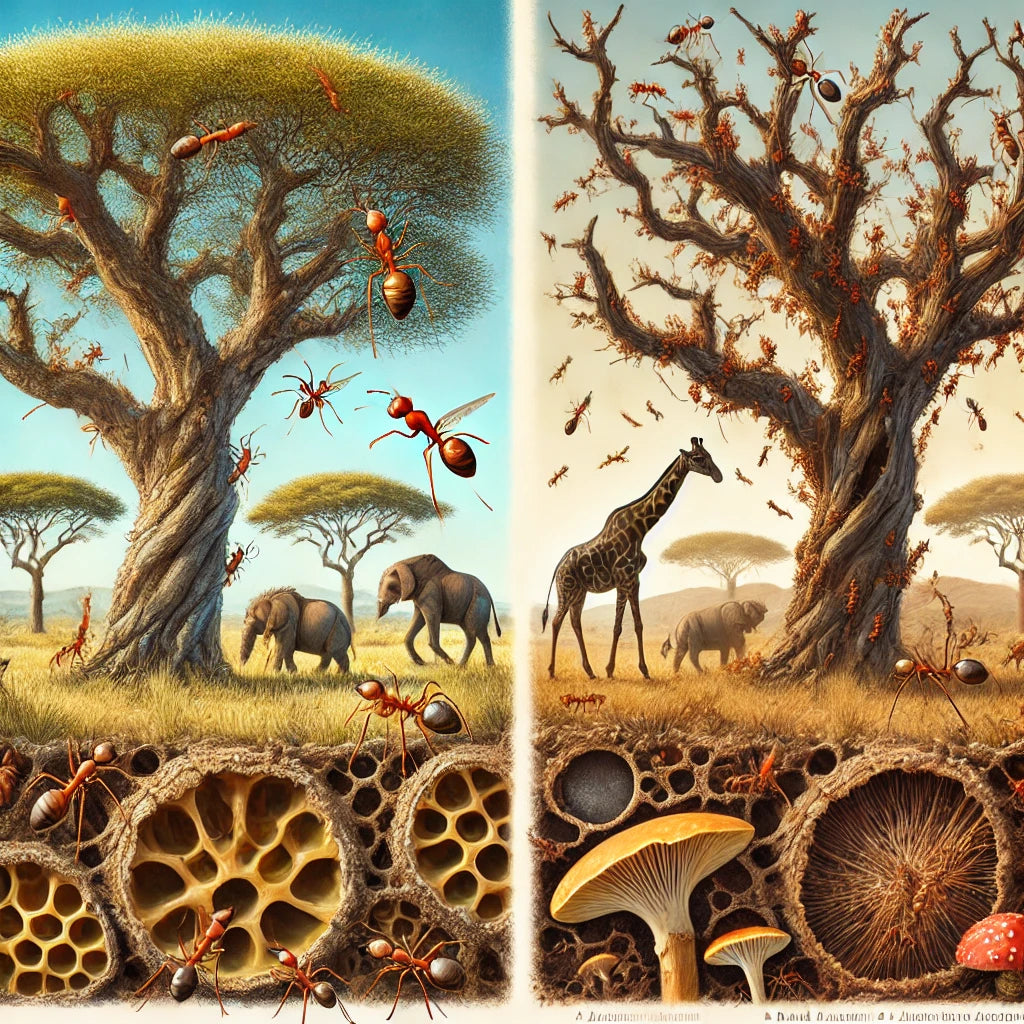Menu
-
-
F.A.Q
- How to identify genuine agarwood chip, natural or cultivated
- How to identify oil injection / absorption fake agarwood beads
- How to know if there are more than one oil in your oil
- How to make your wood bracelet or mala darker
- How to tell if an Agarwood bead sinks WITHOUT sinking it under water?
- How does back flow incense work and how do you burn it?
- Where to start if you don't know what agarwood is ?
- Why are you losing money if you buy seeds and plants?
- Which agarwood incense should I choose?
- Frequently Asked Questions
- Agarwood Related Articles
- Shipping
-
SHOP - Agarwood
-
SHOP - Other Fragrant Wood
-
SHOP - Incense Holder and Burner
-
- FREE Oud Oil guide
- Testimonials
- "Why did you buy this?"
- Contact us
- About Us
- +61430284329
- Login
-
English


When being attacked, calling for help or help yourself or both?
July 25, 2019 3 min read
The Acacia trees

Image by Molecule Man, Pixabay
Acacia trees have developed fascinating strategies to protect themselves from herbivores, leaf-eating insects, and other pathogens. One such method involves secreting sap to attract ants, which in turn guard the tree. According to Science Daily (2014), the presence of these mutualistic ants significantly reduces bacterial abundance on acacia leaves and positively impacts plant health. Symbiotic bacteria colonizing the ants inhibit pathogen growth on the leaves." (Science Daily, 2014)

Image by Bastard Ash, Pixa Bay
A particularly remarkable defence mechanism involves biting ants acting as ‘bodyguards’. The whistling thorn acacia is a prime example. This tree has hollow bulbs at the base of its thorns, providing shelter for ants. In return for nectar and sap, the ants aggressively defend the tree from herbivores (Nassrulla, 2016).
Living in the African savanna poses many dangers for plants. Many plants form partnerships with ants, offering them food and shelter in exchange for protection. When a plant is damaged, ants quickly emerge to defend it. Large herbivores can cause significant damage, but ants greatly reduce this risk by reacting swiftly to attacks.
Large herbivores can cause severe damage to trees by eating leaves, breaking branches, stripping bark, and even knocking over entire trees. However, the ants significantly reduce this damage. To protect the tree effectively, ants need to react quickly and together when the tree is attacked.
A study by Hager and Krausa (2019) in Current Biology revealed that acacia ants, Crematogaster mimosae, defend their host tree by detecting vibrations caused by animals feeding on it. These ants can distinguish between vibrations from browsers (plant-eating animals) and those from the wind. Browser-induced vibrations alarm the ants, prompting them to patrol the branches. These vibrations serve as long-distance alarm signals, triggering the ants’ defensive behaviour throughout the tree.
Acacia trees offer a win-win solution: they provide food and accommodation to ants, which in return protect the trees from pathogens and herbivores. Unlike other trees that rely on aphids, the Swollen Thorn Acacia offers everything ants need, eliminating the need for aphids. Aphids typically suck tree sap and secrete sugar-rich liquid, which ants love. In exchange for protection from ants, aphids provide food, but ultimately, this weakens the tree.
In the case of the Swollen Thorn Acacia, ants build their nests inside the horns and get all their food from the tree. This unique relationship benefits the tree by eliminating the need for aphids and their detrimental effects.
Want to know more:
http://news.bbc.co.uk/2/hi/science/nature/8383577.stm
Aphids are usually being farmed by ants because
- Aphids suck tree sap then "defecate" (secrete) sugar-rich liquid which ants love.
In short, aphids provide food to ants, and in return, they get protection from the ants. In the long term, trees are usually weakened as ultimately, the sap is tree blood which is being sucked to dry by these aphids

As this Swollen Thorn Acacia tree can provide everything to the ants, there is no need for aphids.
The Aquilaria trees

The Aquilaria Trees: Guardians of Agarwood
Aquilaria trees have a unique defence mechanism that results in the formation of agarwood. When these trees are attacked by physical damage, insects, or chemical or biological stress, they trigger a defence response that produces agarwood. Interestingly, agarwood is absent in healthy trees.
Research by Mohamed et al. (2014a) observed that fungi appear in large quantities shortly after the tree is injured, but their numbers significantly decrease over time. Conversely, the darkened area where agarwood forms continues to expand. The accumulation of agarwood compounds at the injury site reduces the fungal population, aligning with its role in defence.
The healing process of the Aquilaria tree involves a decrease in the number of fungi attacking it, thanks to the agarwood. This defence mechanism ultimately drives away diseases, leaving behind agarwood, which we greatly appreciate for its beauty and fragrance. These battle scars tell a fantastic story of survival and victory.
Without these defensive battles, the beautiful agarwood patterns would never be created. These scars represent the glory of pain and the scent of victory, telling the story of a tree that fought and survived against all odds.
Leave a comment
Comments will be approved before showing up.
Also in News

What is Tasbih? The Deep Meaning of Subhan Allah and the Role of Prayer Beads
November 09, 2025 4 min read


